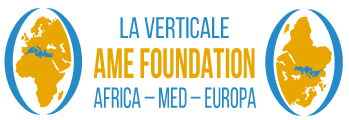
“Africa’s destiny rests largely on its industrialization, based on the local transformation of its abundant and diversified raw materials. Indeed, it is through this industrialization that economic value will be created, jobs will be created for a large number of young people, and the middle classes will be developed. To accelerate this industrialization, we must call on local savings and the dynamism of African companies, but also on foreign direct investment (FDI). As in China in the 1980s and 1990s, the influx of foreign direct investment is a source of development to be favored. But these FDIs, coming from elsewhere, need an efficient, enabling environment – the presence of roads and railroads, equipped ports, energy, high-speed Internet, professional training for employees, etc. – as well as a political framework that is conducive to development. – But they also need a stable political and institutional framework (regulations, legal status, capital mobility, etc.).
In addition to this indispensable physical infrastructure, there is the need for a stable institutional environment and a competitive tax system to be able to attract and retain FDI.
Proposals to improve the model the model: from SEZs to Secure SEZs
This is why, in order to accelerate their industrialization, all African countries must create Special Economic Zones, characterized, according to UNCTAD, by three criteria
a strictly delimited zone ;
a special tax and customs regime ;
a set of infrastructures facilitating the export of products.
In addition to these very specific zones, there is a whole range of business grouping models that are not based on these derogatory regimes, which also have their own specificities, such as industrial districts, ecosystems, technopoles, technology parks and clusters.
The study proposed by IPEMED and AEZO [the report distributed free of charge to the participants of the webinar of September 28, and available on the AME website] is interesting because of its operational aspect. It focuses not on statistical and academic studies, but on the practical functioning of these economic zones, and makes a set of proposals to improve the SEZ model.
This study aims to reveal to European and international decision-makers the power of the SEZ tool for Africa’s industrialization.
This study also highlights the weaknesses of a narrow vision of Euro-African cooperation and provides some avenues to overcome it by exploring an original, partnering, inclusive and environmentally friendly African industrial model.
The transition from the current SEZs to SSEZs (Special and Secure Economic Zones) would be a win/win process for European and African industry.
This path towards the “clusterization” of SEZs into SSEZs is a long road of transformation and learning.
I support the idea that the European Union and the African Union could set up a joint industrial initiative to facilitate the creation of such ZESS and to create (in Tangier, why not?) a joint EU-AU laboratory on SSEZs.
Equipped with a capacity for analysis, training, consulting, benchmarking and intervention, this initiative could, through the labeling of these Special and Secure Economic Zones, participate in the emergence of a specific African model.
Moulay Hafid Elalamy, Moroccan Minister of Industry


